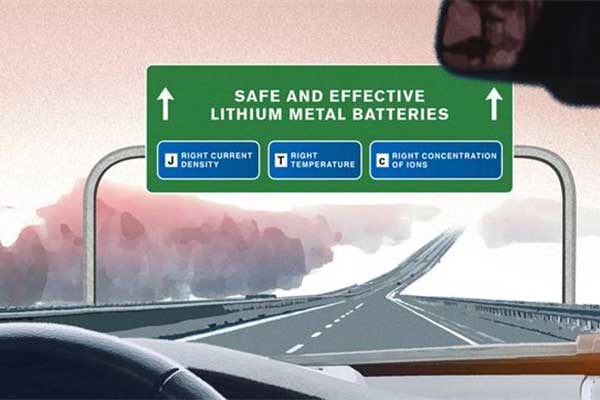- There are high hopes for the next generation of high-energy-density lithium metal batteries.
- An international research team present a method for using the lithium metal in an optimal and safe way.
- They present concrete guidelines for how the batteries should be charged and operated, maximizing efficiency while minimizing the risk of short circuits.
There are high hopes for the next generation of high-energy-density lithium metal batteries, but before they can be used in our vehicles, there are crucial problems to solve. An international research team led by Chalmers University of Technology, Sweden, has now developed concrete guidelines for how the batteries should be charged and operated, maximizing efficiency while minimizing the risk of short circuits.
Lithium metal batteries are one of several promising concepts that could eventually replace the lithium-ion batteries which are currently widely used — particularly in various types of electric vehicles.
The big advantage of this new battery type is that the energy density can be significantly higher. This is because one electrode of a battery cell — the anode — consists of a thin foil of lithium metal, instead of graphite, as is the case in lithium-ion batteries. Without graphite, the proportion of active material in the battery cell is much higher, increasing energy density and reducing weight.
Using lithium metal as the anode also makes it possible to use high-capacity materials at the other electrode — the cathode. This can result in cells with three to five times the current level of energy density.
The big problem, however, is safety.
In two recently published scientific articles in the journals Advanced Energy Materials and Advanced Science, researchers from Chalmers University of Technology, together with colleagues in Russia, China and Korea, now present a method for using the lithium metal in an optimal and safe way.
It results from designing the battery in such a way that, during the charging process, the metal does not develop the sharp, needle-like structures known as dendrites, which can cause short circuits, and, in the worst cases, lead to the battery catching fire. Safety during charging and discharging is the key factor.
“Short-circuiting in lithium metal batteries usually occurs due to the metal depositing unevenly during the charging cycle and the formation of dendrites on the anode. These protruding needles cause the anode and the cathode to come into direct contact with one another, so preventing their formation is therefore crucial. Our guidance can now contribute to this,” says researcher Shizhao Xiong at the Department of Physics at Chalmers.
There are a number of different factors that control how the lithium is distributed on the anode. In the electrochemical process that occurs during charging, the structure of the lithium metal is mainly affected by the current density, temperature and concentration of ions in the electrolyte.
The researchers used simulations and experiments to determine how the charge can be optimized based on these parameters. The purpose is to create a dense, ideal structure on the lithium metal anode.
“Getting the ions in the electrolyte to arrange themselves exactly right when they become lithium atoms during charging is a difficult challenge. Our new knowledge about how to control the process under different conditions can contribute to safer and more efficient lithium metal batteries,” says Professor Aleksandar Matic from Chalmers’ Department of Physics.
—-
Publication Referenced in the Article:
Yangyang Liu, Xieyu Xu, Matthew Sadd, Olesya O. Kapitanova, Victor A. Krivchenko, Jun Ban, Jialin Wang, Xingxing Jiao, Zhongxiao Song, Jiangxuan Song, Shizhao Xiong, Aleksandar Matic. Insight into the Critical Role of Exchange Current Density on Electrodeposition Behavior of Lithium Metal. Advanced Science, 2021; 2003301 DOI: 10.1002/advs.202003301
Xieyu Xu, Yangyang Liu, Jang‐Yeon Hwang, Olesya O. Kapitanova, Zhongxiao Song, Yang‐Kook Sun, Aleksandar Matic, Shizhao Xiong. Role of Li‐Ion Depletion on Electrode Surface: Underlying Mechanism for Electrodeposition Behavior of Lithium Metal Anode. Advanced Energy Materials, 2020; 10 (44): 2002390 DOI: 10.1002/aenm.202002390













Comments